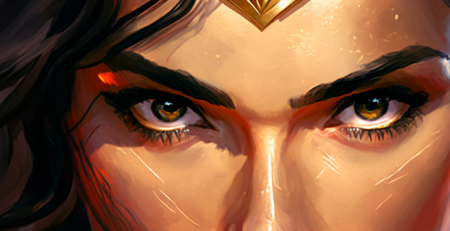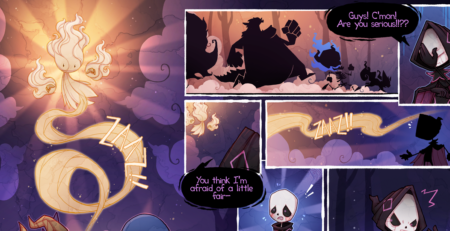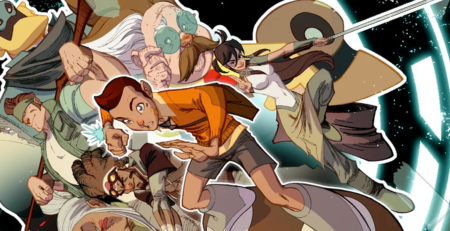create a comic book project
In a world where imagination knows no bounds, there is an art form that brings together stunning visuals and captivating storytelling like no other – the comic book. As fans eagerly await the next chapter in their favorite superhero’s journey or dive into the whimsical pages of an indie graphic novel, the desire to create one’s own comic book project has never been more prevalent. Whether you’re an aspiring artist seeking to showcase your talent or a writer yearning to bring your characters to life, embarking on a comic book project is an exhilarating endeavor that allows you to unleash your creativity and connect with an audience in a unique and compelling way. In this guide, we will explore the essential steps involved in creating a comic book project, from developing a concept and crafting a compelling storyline to refining your artistic style and bringing your characters to life on the page. So, grab your pens, pencils, and imagination, as we embark on a journey into the world of comic book creation, where the possibilities are endless and the artistry knows no bounds.
“Step-by-Step Guide to Creating Your Own Comic Book”
Have you ever dreamed of creating your own comic book, filled with colorful characters and captivating storylines? Well, you’re in luck! In this step-by-step guide, we will walk you through the process of bringing your comic book to life. So grab your pencils, unleash your imagination, and let’s get started!
- Brainstorming and Conceptualization
The first step in creating your own comic book is to brainstorm ideas and develop your unique concept. Ask yourself questions like: What genre will your comic be? Will it be a superhero epic, a sci-fi adventure, or a heartwarming slice-of-life tale? Who will be the main characters? What challenges will they face? Sketch out rough ideas and jot down any inspiration that strikes you. This is your chance to let your creativity run wild! - Planning and Outlining
Once you have a solid concept, it’s time to plan your comic book’s structure. Start by outlining the main plot points and key scenes. Decide how many issues or chapters your comic will have and break down the story accordingly. Consider pacing, character development, and any subplots you want to include. This will serve as your roadmap as you dive into the actual creation process. - Character Development
Now it’s time to breathe life into your characters. Give them names, distinct personalities, and unique traits that will make them memorable to readers. Consider their backstories, relationships, and motivations. You can even create character sketches to visualize their appearances. Remember, compelling characters are the heart and soul of any great comic book! - Scriptwriting
With your outline and characters in place, it’s time to start scripting your comic book. Write dialogue, narration, and panel descriptions for each page. Make sure your storytelling is clear and concise, allowing room for the artwork to shine. Don’t forget to leave space for dynamic action scenes and emotional moments. This is your chance to showcase your writing skills! - Artwork and Illustration
Now comes the fun part – illustrating your comic book! If you’re an artist, grab your pencils, pens, or digital tools and start bringing your characters and scenes to life. If you’re not an artist, don’t worry! You can collaborate with an illustrator or even create a digital comic using various software available. Pay attention to details, expressions, and panel composition to enhance the storytelling. - Coloring and Lettering
With the artwork complete, it’s time to add color and lettering to your comic book. Choose a color palette that complements the mood and tone of your story. Experiment with different shading techniques to create depth and dimension. When it comes to lettering, make sure the text is legible and placed appropriately within the panels. A well-executed color and lettering scheme can take your comic book to the next level! - Editing and Polishing
Once your comic book is complete, take a step back and review your work. Look for any inconsistencies, plot holes, or areas that may need improvement. Seek feedback from friends, family, or fellow comic enthusiasts. Consider making revisions and refinements to ensure your comic book is as polished as possible. - Publishing and Sharing
Congratulations, you’ve reached the final step of creating your own comic book! Decide how you want to publish and share your creation. You can explore traditional publishing routes, self-publishing options, or
“Unleash Your Creativity: Tips for Starting a Comic Book Project”
Unleash Your Creativity: Tips for Starting a Comic Book Project
Are you an aspiring comic book creator, bursting with ideas and eager to bring your characters to life? Look no further! This guide is here to help you kickstart your comic book project and unleash your creative potential. Whether you’re a seasoned artist or a novice writer, these tips will provide you with a solid foundation to begin your comic book journey. So, let’s embark on this exciting adventure together!
- Define Your Concept: Every great comic book starts with a strong concept. Take the time to brainstorm and flesh out your ideas. What is the central theme of your story? Who are the main characters? What kind of world do they inhabit? By answering these questions, you’ll lay a solid foundation for your comic book project.
- Develop Engaging Characters: Characters are the heart and soul of any comic book. Spend time crafting compelling and relatable characters that will captivate readers. Give them unique personalities, flaws, and aspirations. The more developed your characters are, the more invested your audience will become.
- Plan Your Plot: Once you have your concept and characters, it’s time to devise a captivating plot. Outline the major story beats, including the introduction, rising action, climax, and resolution. Consider using storyboarding techniques to map out your comic book visually. This will help you maintain a cohesive narrative throughout your project.
- Experiment with Art Styles: Comic books offer a plethora of art styles to explore. Experiment with different techniques and find a style that suits your story. Whether you prefer a realistic approach or a more stylized aesthetic, let your creativity shine through your artwork. Remember, the visuals are just as important as the story itself.
- Create a Schedule: Comic book projects can be time-consuming, so it’s crucial to establish a realistic schedule. Break down your work into manageable tasks and set deadlines for each stage of the process. This will help you stay organized and motivated, ensuring steady progress towards completing your project.
- Seek Feedback and Collaboration: Don’t be afraid to share your work with others and seek feedback. Join online communities or attend local comic book conventions to connect with fellow creators. Collaborating with others can provide fresh perspectives and improve the overall quality of your comic book.
- Edit and Refine: Once you’ve completed your initial draft, take the time to edit and refine your work. Pay attention to pacing, dialogue, and visual storytelling. Polish your artwork, ensuring consistency and clarity. Remember, the refinement process is crucial in elevating your comic book to its full potential.
- Embrace Failure and Learn: Creating a comic book is a challenging endeavor, and setbacks are inevitable. Embrace failure as an opportunity to learn and grow. Use feedback constructively and allow it to fuel your motivation. Remember that even renowned comic book creators faced obstacles on their journey to success.
- Publish and Share: Finally, once your comic book is complete, it’s time to share your creation with the world. Consider self-publishing options or explore traditional publishing routes. Utilize social media platforms and online comic book communities to promote your work and connect with your audience.
Starting a comic book project is an exciting and fulfilling endeavor. Embrace your creativity, develop engaging characters, and let your imagination soar. With these tips in mind, you’ll be well-equipped to embark on your own comic book adventure. So, grab your pen, paper, and artistic
“From Idea to Reality: How to Bring Your Comic Book Project to Life”
Have you ever dreamt of creating your own comic book and bringing it to life? Well, it’s time to turn that dream into a reality! In this guide, we will explore the steps you need to take to transform your idea into a tangible comic book that will captivate readers. Get ready to unleash your creativity and embark on an exciting journey!
- Conceptualize Your Story:
Every great comic book starts with a compelling story. Let your imagination run wild and brainstorm ideas for your characters, plot, and setting. Consider creating unique and relatable characters that readers can connect with. Develop a captivating storyline that will keep them hooked from start to finish. Remember, this is the foundation of your comic book, so take your time to refine and perfect your concept. - Craft Engaging Dialogue:
The dialogue in your comic book plays a crucial role in conveying the emotions and personality of your characters. Focus on creating authentic and engaging conversations that feel natural. Experiment with different speech patterns, tones, and word choices to give each character a distinct voice. This will help readers connect with them on a deeper level and make your story come alive. - Design Eye-Catching Artwork:
Comic books are a visual medium, so it’s essential to create stunning artwork that will grab readers’ attention. If you’re an artist, you can take on this task yourself. Otherwise, consider collaborating with a talented illustrator who can bring your characters and world to life. Work closely with the artist to ensure that the visuals align with your vision for the story. Pay attention to details, such as panel layouts, composition, and color schemes, to create a visually striking comic book. - Plan Your Panels:
The arrangement of panels is crucial in conveying the flow and pacing of your story. Experiment with different panel layouts to create dynamic and visually engaging sequences. Consider the size and shape of each panel to emphasize important moments or actions. Don’t be afraid to break the traditional panel structure to add excitement and energy to your comic book. Remember, each panel is a window into your story, so make them count! - Polish Your Script:
Once you have your story, dialogue, and artwork in place, it’s time to refine your script. Review your dialogue and make sure it flows smoothly and naturally. Ensure that your story is coherent and logical, with no plot holes or inconsistencies. Consider seeking feedback from fellow writers or comic book enthusiasts to get a fresh perspective on your work. Use their input to fine-tune your script and make it the best it can be. - Explore Publishing Options:
With your comic book now complete, it’s time to explore publishing options. Consider self-publishing if you want full control over the creative and distribution process. Alternatively, you can submit your work to a comic book publisher and explore traditional publishing routes. Research different publishers and their submission guidelines to find the best fit for your project. Remember, persistence is key in the publishing world, so don’t get discouraged by rejections. - Market Your Comic Book:
Once your comic book is published, it’s crucial to market and promote it to reach your target audience. Utilize social media platforms, attend comic book conventions, and collaborate with influencers or fellow creators to generate buzz around your work. Create eye-catching promotional materials, such as posters or trailers, to capture readers’ attention. Build a strong online presence by engaging with your audience and creating a community around your comic book.Turning your comic book idea into a
“Comic Book Project: Finding Inspiration and Developing Characters”
The world of comic books is a vibrant and imaginative realm, where superheroes and villains come to life on the pages. Creating a comic book involves finding inspiration and developing compelling characters that will captivate readers. In this article, we will explore different ways to find inspiration and provide tips on how to develop your characters effectively.
Finding inspiration for your comic book can come from various sources. One way is to draw from your own personal experiences and interests. Reflect on what fascinates you and what stories you are passionate about telling. It could be a childhood memory, a personal struggle, or a particular theme that resonates with you. By tapping into your own experiences, you can infuse your comic book with a sense of authenticity and emotional depth.
Another way to find inspiration is to explore different genres and mediums. Watching movies, reading books, and studying other comic books can expose you to new ideas and storytelling techniques. Pay attention to what works and what doesn’t in these narratives and think about how you can apply those elements to your own comic book.
Developing characters is a crucial step in creating a compelling comic book. A well-developed character is relatable, has a unique personality, and possesses both strengths and flaws. To begin, think about the role your character will play in the story. Are they the hero, the sidekick, or the antagonist? Consider their motivations, fears, and desires. This will help you shape their personality and give them depth.
A great way to develop your characters is to create character profiles. Write down their physical appearance, backstory, and any special abilities or skills they possess. Consider their relationships with other characters and how they interact with the world around them. This will help you maintain consistency in your storytelling and ensure that your characters remain true to their established traits.
Furthermore, it can be helpful to sketch out your characters visually. This will give you a better sense of their appearance and help you visualize how they will look on the page. Experiment with different design elements, such as costumes, hairstyles, and facial expressions, to make your characters visually distinct and memorable.
In conclusion, finding inspiration and developing characters are essential steps in creating a captivating comic book. By drawing from personal experiences, exploring various genres, and studying other works, you can find inspiration for your story. Developing well-rounded characters with unique personalities and backstories will bring depth and authenticity to your comic book. Remember to create character profiles and visually sketch your characters to ensure consistency and visual appeal. With these tips in mind, you are well on your way to creating a comic book that will capture the imaginations of readers.
“The Art of Storytelling: Crafting a Narrative for Your Comic Book Project”
Title: The Art of Storytelling: Crafting a Narrative for Your Comic Book Project
Introduction:
Welcome to the fascinating world of comic book creation! As you embark on your journey to create a captivating comic book, one of the most critical aspects to consider is crafting a compelling narrative. In this guide, we will explore the art of storytelling, providing you with valuable insights and techniques to bring your comic book project to life. So, grab your pen and paper, and let’s dive into the realm of storytelling!
Chapter 1: Understanding the Power of Narrative
In this chapter, we will delve into the significance of narrative in comic books. We will explore how a well-crafted story can enhance the reader’s experience, engage their emotions, and create a lasting impact. By understanding the power of narrative, you will be equipped with the foundation needed to create a memorable and captivating comic book.
Chapter 2: Developing Engaging Characters
Characters are the heart and soul of any story. In this chapter, we will discuss the process of developing compelling characters that resonate with your readers. We will explore techniques to breathe life into your characters, ensuring that they possess depth, relatability, and a unique persona. Prepare to unleash your creativity and bring forth characters that will captivate your audience!
Chapter 3: Constructing a Gripping Plot
A well-structured plot serves as the backbone of your comic book. In this chapter, we will guide you through the process of constructing a gripping plot that keeps readers hooked from start to finish. Learn about the essential elements of a compelling storyline, such as conflict, tension, and pacing. Whether you’re planning an epic superhero adventure or a slice-of-life drama, this chapter will provide you with the tools to construct a plot that leaves readers eagerly turning pages.
Chapter 4: Mastering Dialogue and Narration
Dialogue and narration play a crucial role in comic books, helping to convey emotions, propel the story forward, and reveal character traits. In this chapter, we will delve into the art of mastering dialogue and narration. You will learn how to create authentic, memorable dialogue that reflects the unique voices of your characters. Additionally, we will explore different narrative techniques to effectively convey thoughts, emotions, and actions throughout your comic book.
Chapter 5: Balancing Text and Visuals
Comic books are a unique blend of text and visuals, where both elements must work harmoniously to create a cohesive storytelling experience. In this chapter, we will discuss the importance of balancing text and visuals, ensuring that neither overshadows the other. You will learn how to utilize the power of visual storytelling to enhance your narrative, while also leveraging text to provide necessary context and depth.
Conclusion:
Congratulations! By completing this guide, you have gained valuable insights into the art of storytelling for your comic book project. Remember, storytelling is a continuous learning process, and experimentation is key to finding your unique style. Armed with the knowledge and techniques provided here, you are now equipped to embark on your creative journey with confidence. So, go forth and let your imagination soar as you craft a narrative that will captivate readers and leave a lasting impression. Happy storytelling!




